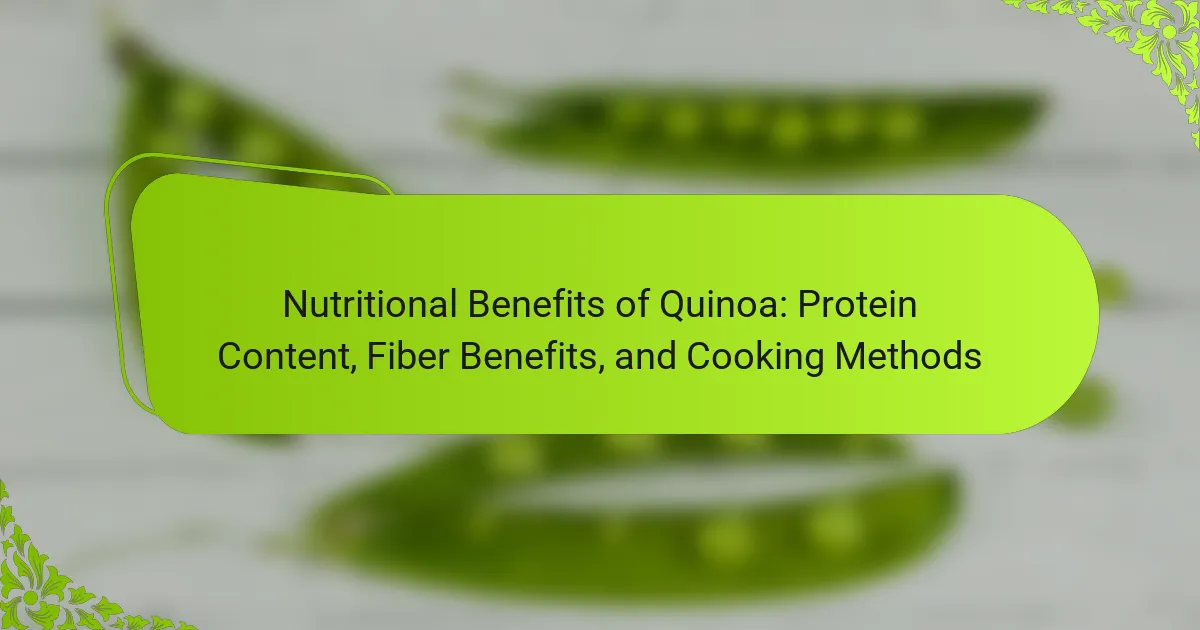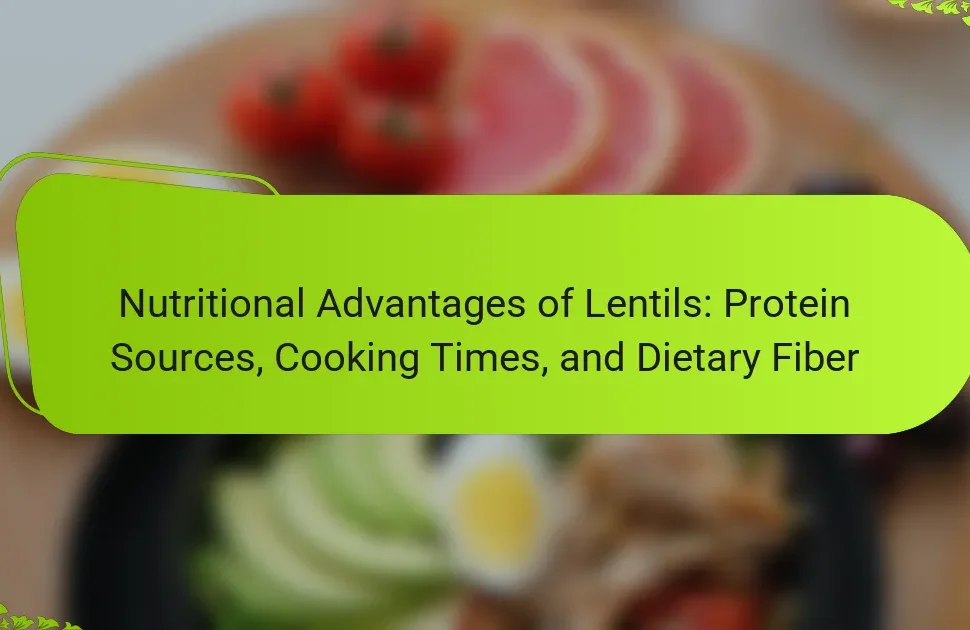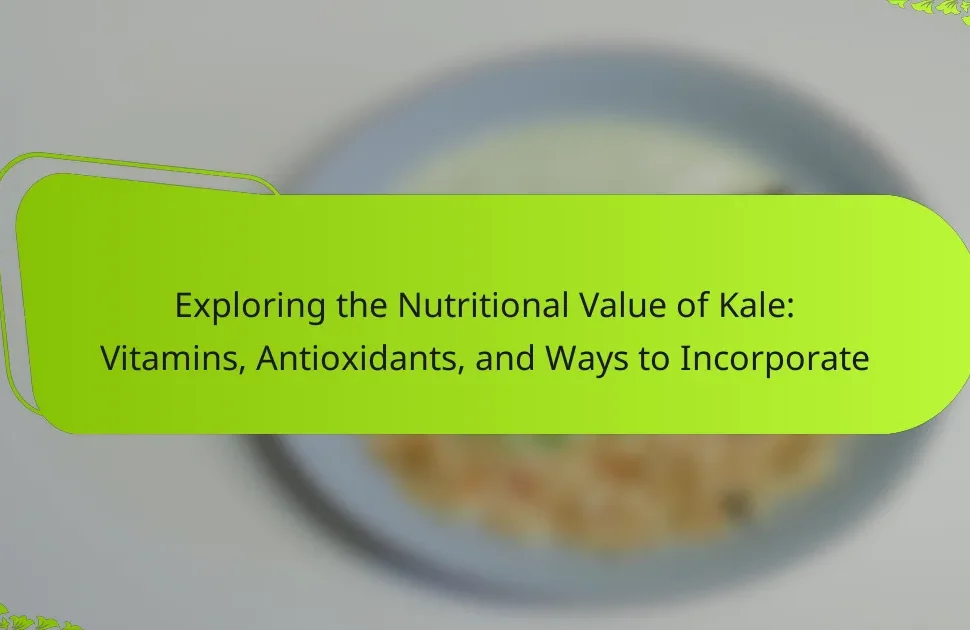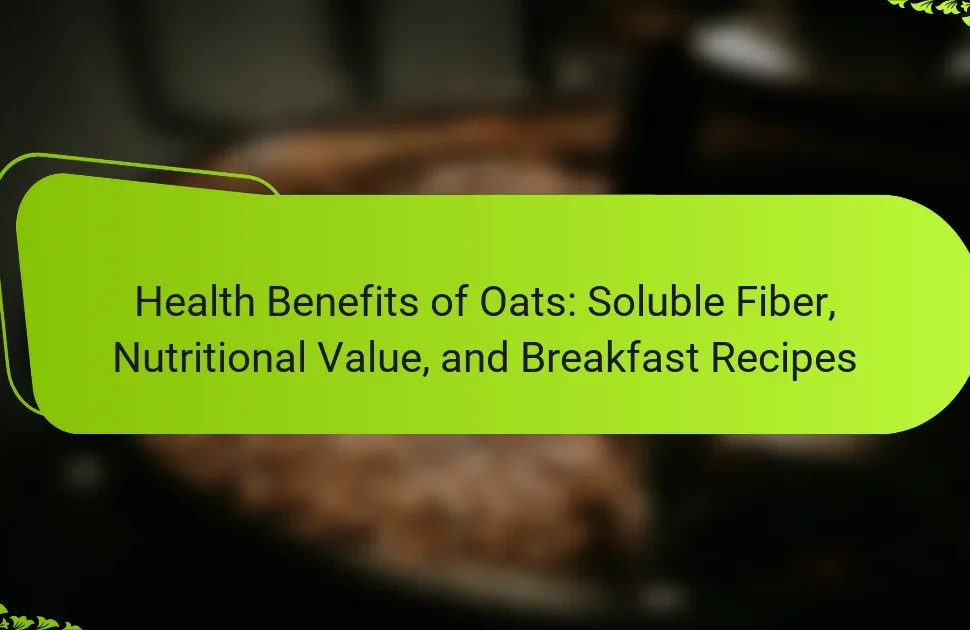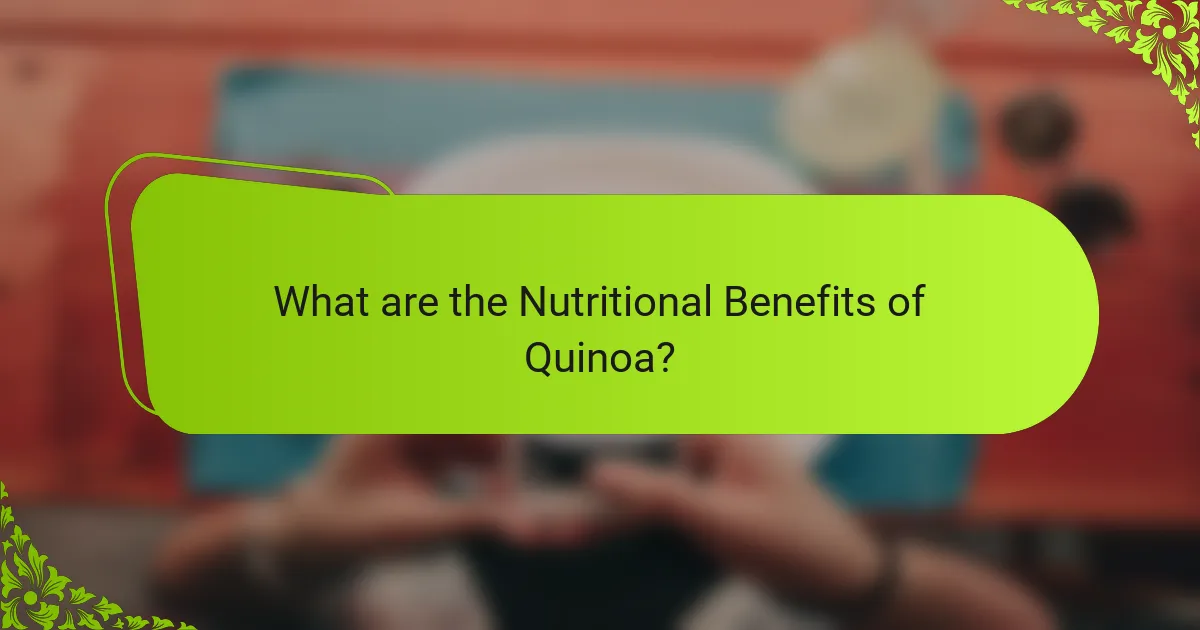
What are the Nutritional Benefits of Quinoa?
Quinoa is a highly nutritious grain known for its numerous health benefits. It contains all nine essential amino acids, making it a complete protein source. One cup of cooked quinoa provides approximately 8 grams of protein. Quinoa is also rich in dietary fiber, offering about 5 grams per cup, which aids in digestion and promotes satiety. Additionally, it is a good source of vitamins and minerals, including magnesium, phosphorus, and iron. Quinoa has a low glycemic index, making it suitable for blood sugar management. Its antioxidant properties help combat oxidative stress. Overall, quinoa is a versatile and nutrient-dense food that supports overall health.
How does Quinoa compare to other grains in terms of nutrition?
Quinoa is nutritionally superior to many other grains. It contains all nine essential amino acids, making it a complete protein source. Most grains, like rice and wheat, lack one or more essential amino acids. Quinoa has a higher protein content, averaging around 8 grams per cup cooked. In comparison, brown rice offers about 5 grams per cup cooked. Quinoa is also rich in dietary fiber, with approximately 5 grams per cup cooked, while white rice has less than 1 gram. Additionally, quinoa provides more vitamins and minerals, including magnesium, iron, and B-vitamins, compared to many common grains. This nutrient density makes quinoa a highly beneficial choice for those seeking a balanced diet.
What specific nutrients are found in Quinoa?
Quinoa contains several specific nutrients. It is rich in protein, providing all nine essential amino acids. Quinoa also has a high fiber content, promoting digestive health. Additionally, it contains important vitamins such as B vitamins, including B1, B2, and B6. The mineral content includes magnesium, phosphorus, and iron, which are vital for various bodily functions. Quinoa is also a source of antioxidants, which help combat oxidative stress. This combination of nutrients makes quinoa a highly nutritious food option.
Why is Quinoa considered a superfood?
Quinoa is considered a superfood due to its high nutritional value. It contains all nine essential amino acids, making it a complete protein source. Quinoa is also rich in dietary fiber, which aids digestion. Additionally, it provides important vitamins and minerals, including magnesium, iron, and B vitamins. This grain is gluten-free, making it suitable for those with gluten sensitivities. Research indicates that quinoa can help lower cholesterol levels and support heart health. Its low glycemic index also makes it beneficial for blood sugar management. These attributes contribute to quinoa’s reputation as a nutrient-dense superfood.
What is the protein content of Quinoa?
Quinoa contains approximately 8 grams of protein per cooked cup (185 grams). This makes it a complete protein source, containing all nine essential amino acids. Quinoa’s protein content is higher than that of most grains. It is also rich in fiber and various vitamins. These characteristics contribute to its nutritional value. Studies have shown that quinoa is beneficial for muscle repair and growth. Its protein content makes it a popular choice among vegetarians and vegans.
How does the protein quality in Quinoa differ from other sources?
Quinoa has a higher protein quality compared to many other plant-based sources. It contains all nine essential amino acids, making it a complete protein. Most plant proteins lack one or more essential amino acids. For example, beans and lentils are often low in methionine. Quinoa’s amino acid profile is similar to that of animal proteins. This quality makes quinoa an excellent protein source for vegetarians and vegans. Studies show quinoa has a protein digestibility-corrected amino acid score (PDCAAS) of 0.87, which is high for a plant food. In contrast, many grains have lower scores, indicating lesser protein quality.
What are the essential amino acids present in Quinoa?
Quinoa contains all nine essential amino acids. These amino acids are histidine, isoleucine, leucine, lysine, methionine, phenylalanine, threonine, tryptophan, and valine. Quinoa is unique because it is a complete protein source, providing all necessary amino acids. This makes it particularly valuable for vegetarians and vegans. Studies show that quinoa has a balanced amino acid profile. It supports muscle repair and growth due to its high protein content. The presence of these amino acids contributes to overall health and nutrition.
What are the fiber benefits of Quinoa?
Quinoa is a high-fiber grain that offers several health benefits. It contains about 2.8 grams of fiber per 100 grams when cooked. This fiber aids in digestion by promoting regular bowel movements. Quinoa’s fiber content helps to regulate blood sugar levels, preventing spikes after meals. It also contributes to a feeling of fullness, which can assist in weight management. Additionally, the fiber in quinoa supports heart health by helping to lower cholesterol levels. These benefits are backed by studies highlighting the importance of dietary fiber in a balanced diet.
How does the fiber content in Quinoa support digestive health?
The fiber content in quinoa supports digestive health by promoting regular bowel movements. Fiber adds bulk to the stool, which helps prevent constipation. Quinoa contains both soluble and insoluble fiber. Soluble fiber helps to soften the stool, making it easier to pass. Insoluble fiber aids in moving food through the digestive tract. A serving of quinoa provides approximately 5 grams of fiber. This amount contributes significantly to the daily recommended intake of fiber, which is about 25 grams for women and 38 grams for men. Adequate fiber intake is linked to a reduced risk of digestive disorders. Studies indicate that high-fiber diets can lower the risk of colorectal cancer.
What types of fiber are found in Quinoa?
Quinoa contains both soluble and insoluble fiber. Soluble fiber helps to lower cholesterol and stabilize blood sugar levels. Insoluble fiber aids in digestion and promotes regularity. Quinoa’s fiber content contributes to a feeling of fullness. This can assist in weight management. Approximately 2.5 grams of fiber are found in one cup of cooked quinoa. This amount supports daily fiber intake recommendations. The presence of both types of fiber makes quinoa a nutritious choice.

What cooking methods enhance the nutritional benefits of Quinoa?
Soaking and sprouting quinoa enhances its nutritional benefits. Soaking reduces antinutrients like saponins, improving nutrient absorption. Sprouting increases vitamin content and makes proteins more digestible. Cooking quinoa with a broth instead of water can add flavor and nutrients. Steaming quinoa retains more nutrients compared to boiling. These methods collectively improve the bioavailability of vitamins and minerals in quinoa.
How can Quinoa be prepared for maximum health benefits?
Quinoa can be prepared for maximum health benefits by rinsing it thoroughly before cooking. This process removes saponins, which can impart a bitter taste. Cooking quinoa in a 2:1 water-to-quinoa ratio enhances its digestibility. Boiling for 15-20 minutes allows it to absorb nutrients effectively. Adding vegetables or herbs during cooking increases its nutritional profile. Consuming quinoa as a whole grain retains its fiber and protein content. Additionally, pairing quinoa with vitamin C-rich foods boosts iron absorption. Studies show that quinoa has a complete amino acid profile, making it an excellent protein source.
What are some popular cooking techniques for Quinoa?
Popular cooking techniques for quinoa include boiling, steaming, and baking. Boiling is the most common method. It involves rinsing quinoa, then cooking it in water at a 2:1 ratio. This technique typically takes about 15 minutes. Steaming quinoa is another effective method. It preserves nutrients and enhances the texture. Baking quinoa can create a unique flavor profile. This method usually involves mixing quinoa with other ingredients and baking until done. Each technique provides a different texture and taste, allowing for versatility in meals.
How does soaking Quinoa affect its nutritional profile?
Soaking quinoa enhances its nutritional profile by reducing antinutrients and improving digestibility. Antinutrients like saponins and phytic acid can inhibit nutrient absorption. Soaking helps to remove saponins, which can impart a bitter taste. This process also activates enzymes that break down phytic acid. As a result, the bioavailability of minerals such as iron, zinc, and magnesium increases. Research shows that soaking quinoa can improve protein digestibility by up to 25%. Additionally, soaking can increase the availability of amino acids, making quinoa a more complete protein source.
What are some creative ways to incorporate Quinoa into meals?
Quinoa can be creatively incorporated into meals in various ways. It serves as a base for salads, adding texture and protein. Mixing cooked quinoa with roasted vegetables enhances flavor and nutrition. Quinoa can also be used in soups to provide heartiness and depth. It works well in breakfast dishes, such as porridge, when combined with milk and fruits. Quinoa can be added to smoothies for an extra protein boost. Additionally, it can be used as a filling in stuffed peppers or tacos. Using quinoa in baking, such as in muffins or bread, introduces a nutritious element. Lastly, quinoa can be made into patties for burgers, offering a healthy alternative to meat. These methods showcase quinoa’s versatility and appeal in various culinary contexts.
What types of dishes can be made with Quinoa?
Quinoa can be used to make a variety of dishes. Common types include salads, bowls, and side dishes. Quinoa salads often combine vegetables, beans, and dressings. Quinoa bowls may feature proteins, vegetables, and sauces. Side dishes can include seasoned quinoa served with meats or vegetables. Quinoa can also be used in soups and stews for added texture. Additionally, it can be incorporated into breakfast dishes like porridge or pancakes. Each dish highlights quinoa’s versatility and nutritional benefits.
How can Quinoa be used as a substitute for other grains?
Quinoa can be used as a substitute for other grains in various dishes. It serves as a gluten-free alternative to wheat, rice, and barley. Quinoa cooks quickly, typically in about 15 minutes. This grain is rich in protein, offering about 8 grams per cup cooked, which is higher than most grains. Quinoa also contains all nine essential amino acids, making it a complete protein source.
In salads, quinoa can replace rice or couscous, adding texture and nutritional value. It can be used in baking as a flour substitute, providing a nutty flavor. Quinoa can also be incorporated into breakfast dishes, replacing oatmeal or other cereals. This versatility makes quinoa an excellent choice for various dietary needs.

What practical tips can help in preparing Quinoa?
Rinse quinoa before cooking to remove saponins, which can impart a bitter taste. Use a ratio of 2 cups of water for every 1 cup of quinoa. Bring the water to a boil, then reduce to a simmer and cover. Cook for about 15 minutes until the quinoa absorbs the water and becomes fluffy. Let it sit covered for 5 minutes after cooking to enhance texture. Fluff with a fork before serving to separate the grains. Incorporate spices or broth during cooking for added flavor. Quinoa can be used in salads, bowls, or as a side dish.
How can I ensure my Quinoa is properly cooked?
To ensure quinoa is properly cooked, rinse it thoroughly before cooking. This removes the saponins, which can impart a bitter taste. Use a ratio of two parts water to one part quinoa for cooking. Bring the water to a boil, then add the rinsed quinoa. Reduce the heat to a simmer and cover the pot. Cook for about 15 minutes or until the quinoa is tender and the water is absorbed. Fluff the quinoa with a fork after cooking to separate the grains. Properly cooked quinoa should have a slight crunch and a translucent appearance.
What common mistakes should be avoided when cooking Quinoa?
Common mistakes to avoid when cooking quinoa include not rinsing it, using the wrong water-to-quinoa ratio, and overcooking. Rinsing quinoa removes its natural coating called saponin, which can impart a bitter taste. The ideal water-to-quinoa ratio is typically 2:1. Using too little water can lead to undercooked quinoa, while too much can make it mushy. Overcooking quinoa results in a loss of texture, turning it gummy. Following these guidelines ensures properly cooked quinoa with a pleasant taste and texture.
How can I store cooked Quinoa for later use?
Store cooked quinoa in an airtight container. Ensure it is completely cooled before sealing. Refrigerate the container for up to five days. For longer storage, freeze the quinoa in portion-sized bags. It can last up to three months in the freezer. When ready to use, thaw in the refrigerator or microwave. Proper storage maintains its texture and nutritional value.
Quinoa is a highly nutritious grain recognized for its complete protein content, providing all nine essential amino acids, along with significant amounts of dietary fiber, vitamins, and minerals. This article explores the nutritional benefits of quinoa, including its protein content, fiber advantages, and comparisons with other grains. Additionally, it discusses effective cooking methods to enhance its nutritional profile and offers practical tips for preparation and storage. Overall, quinoa’s versatility and health benefits make it an essential addition to a balanced diet.
